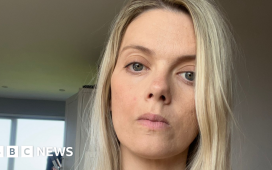Art, of course, brings pleasure. Now there is evidence that paintings can also help alleviate medical conditions, as well as boosting NHS staff.
A new book produced by the charity Paintings in Hospitals (PiH), which has a collection of 3,500 works and prints, including by Andy Warhol, Maggi Hambling and Bridget Riley, in medical settings across the UK, contains feedback from dozens of patients and medical staff about the “invaluable” benefits of seeing the art. Hospitals, health centres, surgeries and hospices can borrow the charity’s paintings to put on display, usually for two or three years.
In the book, Lifting the Clouds, patients and medical staff have given statements or been interviewed. PiH chief executive Sandra Bruce-Gordon is sending the book along with a letter to the prime minister and health secretary, following their recent calls for suggestions to improve the NHS. “Our research clearly shows art helps health,” Bruce-Gordon said.
Most patients’ comments in the book are anonymous for privacy reasons. “I’m receiving chemo and wanted to let you know how lovely it is to have art in the waiting area,” says one. “It reminds me that there is a life after cancer.” Another talks of being in and out of hospital, and stopping to look at one painting, Heavy Seas by Ken Symonds. “It has given me a lot of calm before my appointments. I hope I can recover and go to the sea itself.”
Another patient, recently in the Maudsley psychiatric hospital in London, says: “When the ward was unlocked, I would sneak to the cafe in outpatients and gaze at the paintings on the wall. It gave me a break from the grind of the bleak ward.”
Clinical staff also see benefits. “When you come to a hospital, you come for difficult reasons,” said Peter Wilkinson, a consultant cardiologist at Ashford and St Peter’s Trust, Surrey. His hospital has some Warhol prints. “They take your mind off your concerns.”
Wynford Ellis Owen, chief executive of Cardiff’s Living Room, an addiction recovery centre, where June Forster’s Winter Landscape hung, said: “It was invaluable in our therapeutic work. The painting’s many shapes and colours helped show that human life itself must be viewed from both its dark and light sides.”
“We wanted to make our new premises modern, friendly and interesting,” said Susan Rankine, senior partner at the Victoria Medical Centre in Westminster.
She believes the art chosen, including Anemone and Jugs by Paula Vincent, alleviates anxiety.
Earlier this year, Southampton’s Shirley Health Partnership consulted 1,100 patients and staff about PiH works for its new premises. Stella Rankin’s Daffodils and Wilhelmina Barns-Graham’s Millennium Blue II are among 30 pieces selected.
Artworks are often chosen for their suitability, like the inspirational paintings of Welsh rugby internationals at the stroke rehabilitation centre at University Hospital in Llandough.
after newsletter promotion
There is also new scientific support to back PiH’s evidence, including two studies with the Art Fund. Visitors to the Courtauld Gallery in London were given headsets which showed that the brain’s dopamine levels of pleasure and comfort were raised by the landscapes of Van Gogh and Monet, but lowered by some abstracts.
Another test with University College London involved 6,700 adults aged over 50, who were asked 15 years ago about their gallery visits, and again this year. The results showed paintings reduced anxiety, depression and helped with living longer.
In Holland, neuro-research company Neurensics produced results in October from visitors looking at Vermeer’s Girl with a Pearl Earring in the Mauritshuis museum. Their brains were stimulated time and time again by her eyes, mouth and earring.
“The longer they looked, the more drawn in they were and satisfied,” said Martin de Munnik of Neurensics.









